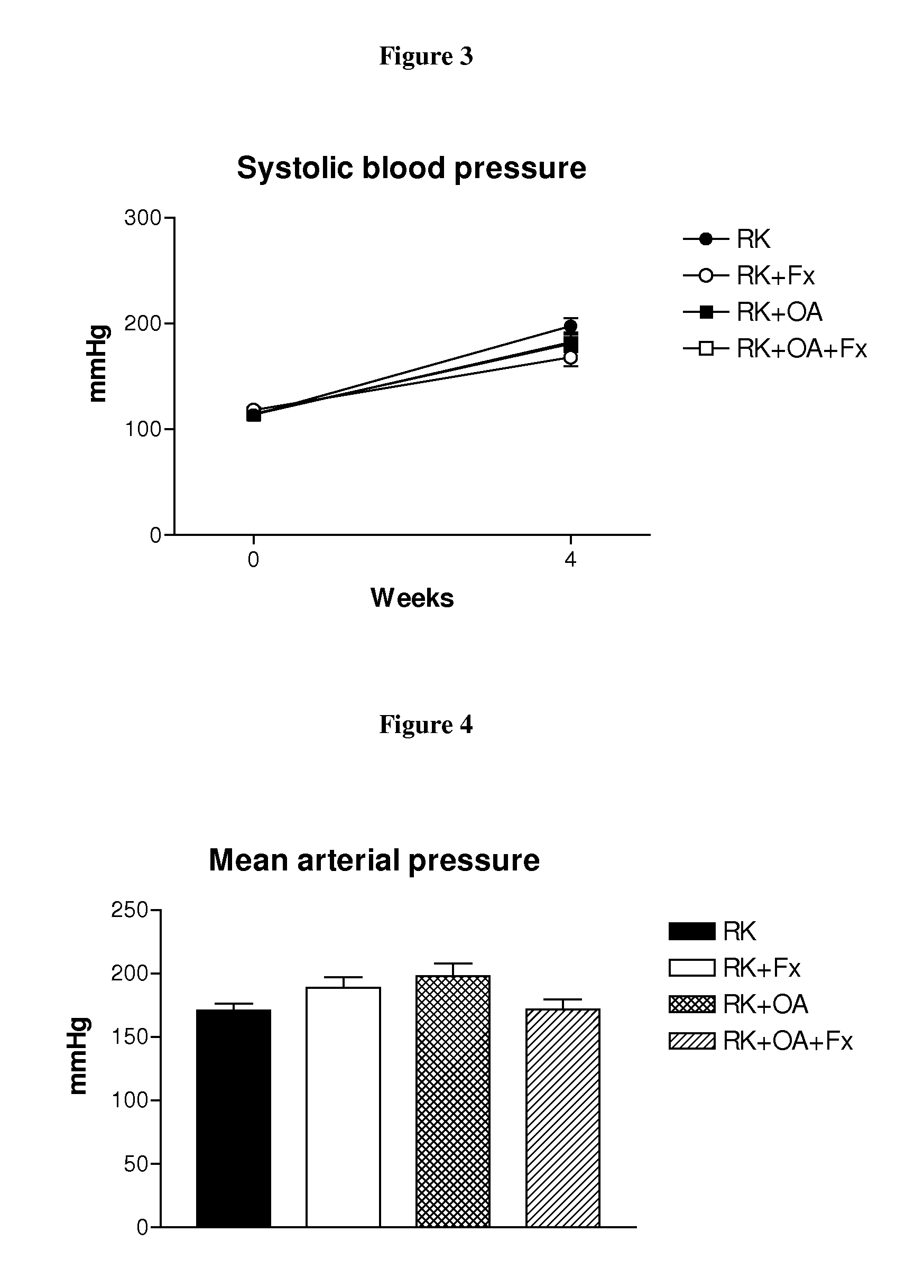Methods for preserving and/or increasing renal function using xanthine oxidoreductase inhibitors
a technology of xanthine oxidoreductase inhibitor and renal function, which is applied in the direction of anti-noxious agents, drug compositions, biocides, etc., can solve the problem that their impact on renal function is not fully understood
- Summary
- Abstract
- Description
- Claims
- Application Information
AI Technical Summary
Benefits of technology
Problems solved by technology
Method used
Image
Examples
example 1
[0195]Information was collected prospectively in a subgroup of 18 human subjects with a history of nephrolithiasis, as reported by the subjects prior to study enrollment. In a 4-week, double-blind, phase 2 study, subjects were randomly assigned to one or four treatment arms: (1) febuxostat 40 mg per day, (2) febuxostat 80 mg per day, (3) febuxostat 120 mg per day, or (4) placebo.
[0196]Subjects completing the double-blind study entered an open-label, long-term study and began treatment with 80 mg febuxostat per day. Febuxostat doses could be titrated over the initial 6 months to 40 mg or 120 mg febuxostat per day based on the subjects' serum urate levels and the occurrence of adverse events.
[0197]In the study subset, a post-hoc analysis of nephrolithiasis outcome in the study subjects (n=13) who had received febuxostat for ≧30 months. In the event of an occurrence of renal calculus formation, all such stones were analyzed for mineral content.
[0198]The following were the criteria for ...
example 2
[0205]Mice of the species / strain B6C3F1 of an initial age of 6 weeks were dosed via oral gavage with febuxostat suspended in 0.5% methyl cellulose. The daily dose administered was either 0 mg (i.e., the control group), 3 mg, 12 mg, 24 mg, or 48 mg. Histopathological examination of the kidney was carried out after 13-weeks of dosing for vacuolar degeneration of renal proximal tubules (a known naturally occurring change in rodents). The results are shown in Table 5.
TABLE 5Daily Dose0(Control)3122448MFMFMFMFMFNo. of1212121212 1212 1212 12animalsexaminedVacuolar123 7*1 5**1 2**0 1**2Degen-erationof RenalProximalTubulesM = MaleF = Female*p ≦ 0.05 (Dunnett's non-parametric multiple comparison test)**p ≦ 0.01 (Dunnett's non-parametric multiple comparison test)
[0206]Example 2 illustrates that administration of febuxostat reduced the amount of vacuolar degeneration of the renal proximal tubules in a statistically significant fashion in the male animals studied.
example 3
[0207]Male Wistar rats (295-340 g) were used to produce rats with remnant kidney (RK) as follows. Under light anesthesia with ether, a ⅚ nephrectomy was performed by removal of the right kidney and by selective ligation of 2-3 branches of the left renal artery. Rats were then assigned to one of four treatment groups: Group 1, RK control rats (n=7); Group 2, RK+febuxostat (Fx) rats (n=8); Group 3, RK+oxonic acid (OA) rats (n=6); and Group 4, RK+OA+Fx (n=10). Oxonic acid (OA) (Sigma-Aldrich, St Louis Mo., USA), administered at 750 mg / kg body weight daily by oral gavage, was given starting the day after the ⅚ nephrectomy. Beginning immediately following the surgery, febuxostat was administered in drinking water at 30 mg / L (3-4 mg / kg / day), whereas the respective controls received only drinking water (with 3.5 mg / L of NaCl added to keep an equivalent salt concentration to the Fx-containing water).
[0208]All groups were treated for four weeks. Body weight (beginning just before surgery) an...
PUM
| Property | Measurement | Unit |
|---|---|---|
| frequency | aaaaa | aaaaa |
| body weight | aaaaa | aaaaa |
| systolic blood pressure | aaaaa | aaaaa |
Abstract
Description
Claims
Application Information
 Login to View More
Login to View More - R&D
- Intellectual Property
- Life Sciences
- Materials
- Tech Scout
- Unparalleled Data Quality
- Higher Quality Content
- 60% Fewer Hallucinations
Browse by: Latest US Patents, China's latest patents, Technical Efficacy Thesaurus, Application Domain, Technology Topic, Popular Technical Reports.
© 2025 PatSnap. All rights reserved.Legal|Privacy policy|Modern Slavery Act Transparency Statement|Sitemap|About US| Contact US: help@patsnap.com



